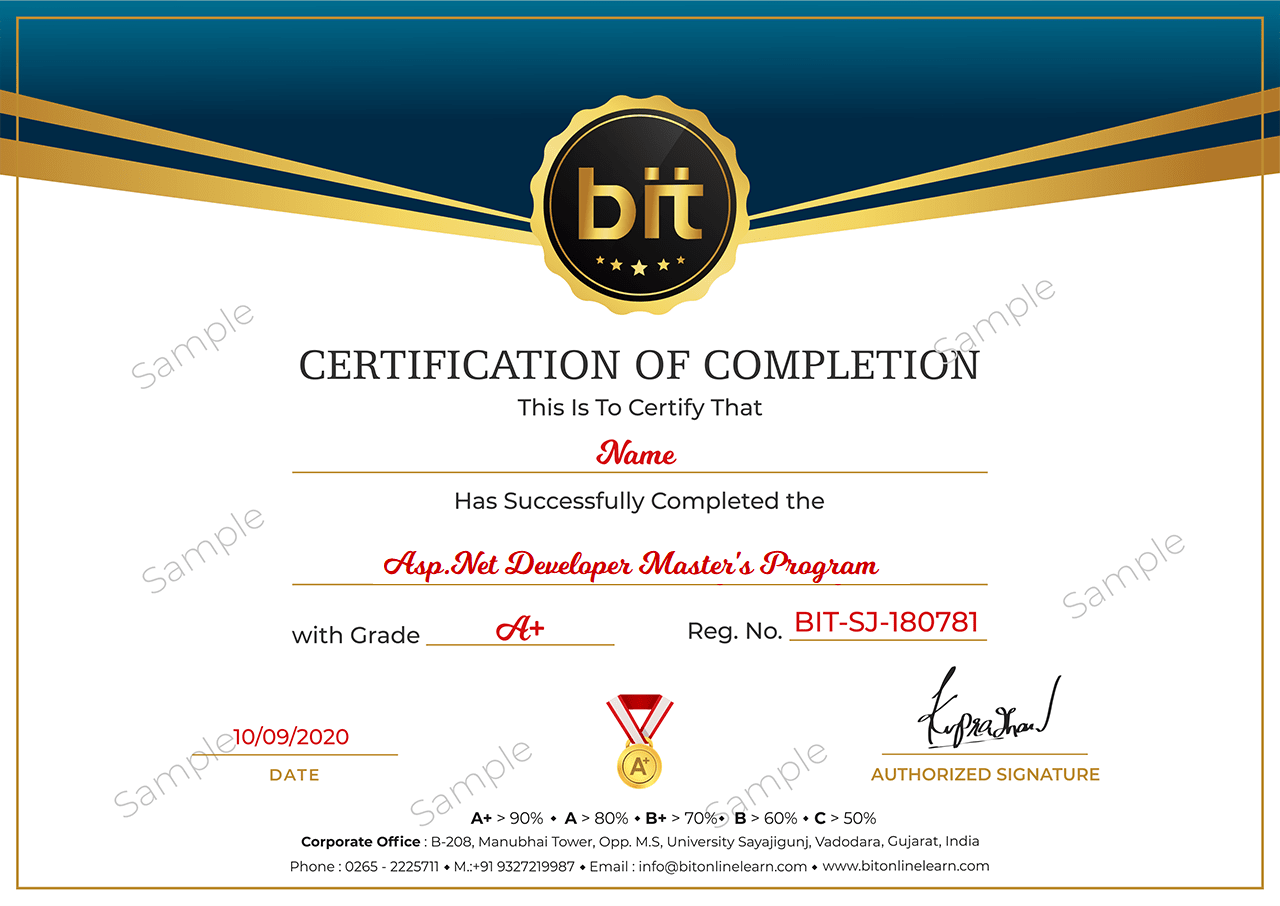· Framework
· Common Language Runtime
· Base Class Library
· Common Type System (CTS)
· Intermediate Language
· Assemblies
· Namespaces
· Practical Exercise


Welcome to the Complete Asp.net Master Program, the only Online Training Course you need to learn to code and become a web developer. Our .NET Offline/Online course objective is to get familiarize with Microsoft.Net, C#, C#.Net and ASP.NET technologies. The .Net online training course is designed to understand the different concepts and features of .NET coding, debugging and developing of Windows and web applications. The advanced learner can opt for advanced ASP.Net Modules.Start a new career with ASP.Net Developer Master's Program Training. We have industrial experts focusing on giving 100% project-based practical training which will help them with their employability. ASP.Net covers .Net Architecture, ASP.Net controls, C#, Web Services, Web API, JSON Parsing, Linq, ADO.Net, JQuery, Entity Framework, and many other concepts that are required in the industry for employability as a .Net Developer. The C# and ASP.Net Training Courses are basically designed to cultivate a developer’s mindset amongst the students. The idea is to provide an understanding of different features of .NET that are used for coding, debugging, tuning and deploying applications for Windows and Web.
Asp.Net Master Program Training develops the programming skills in C# required for the developers to build Windows and Web applications. This training course familiarizes participants with the significance of .NET framework, .NET idioms, and basic concepts involved in the creation of rich applications. The course covers concepts from basics and makes the learner able to expand the concepts to other languages. The course drives you through the fundamentals of the programming language structure, syntax required for console and web applications creation and deployment.

Copyright Bitonlinelearn © 2021. All Rights Reserved | Design and Developed By BITINFOTECH